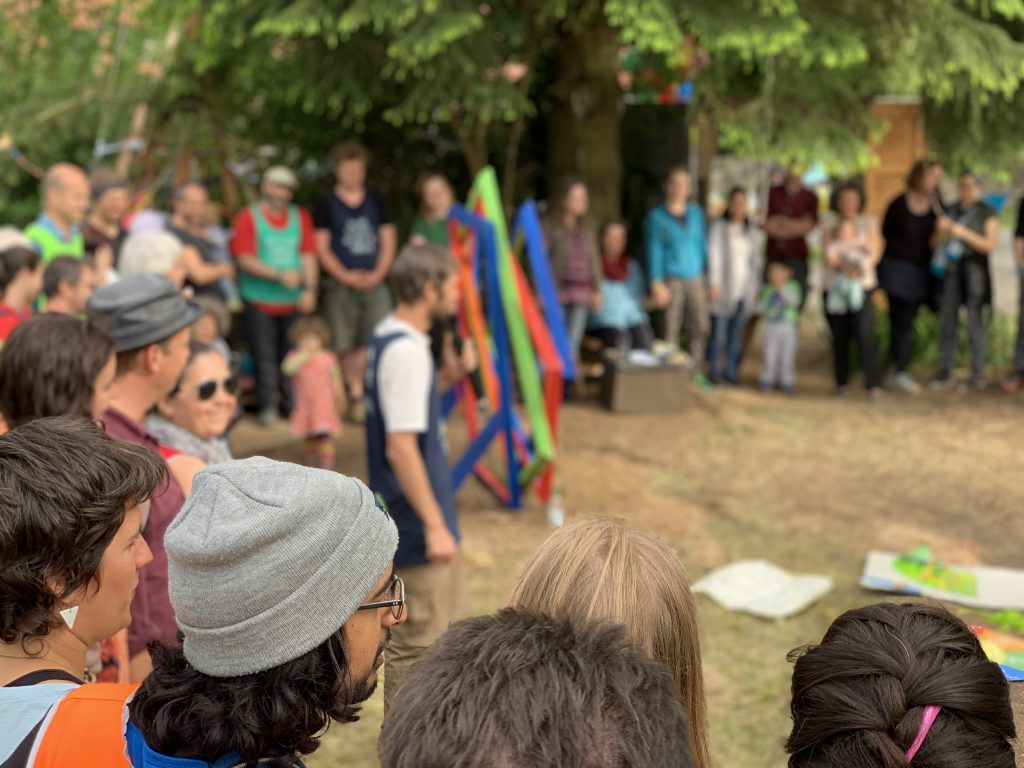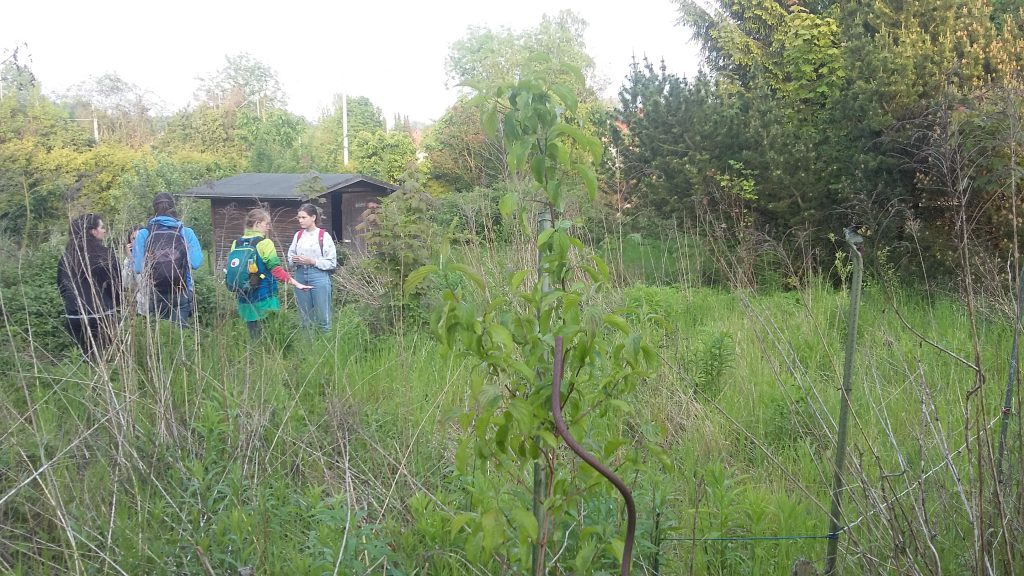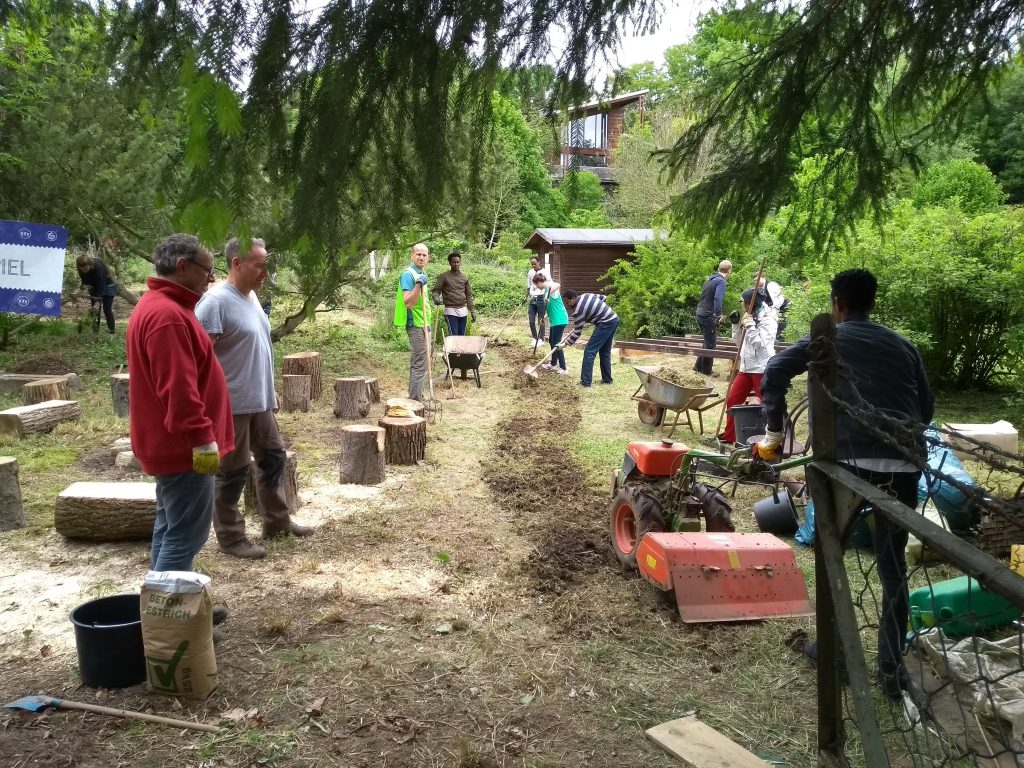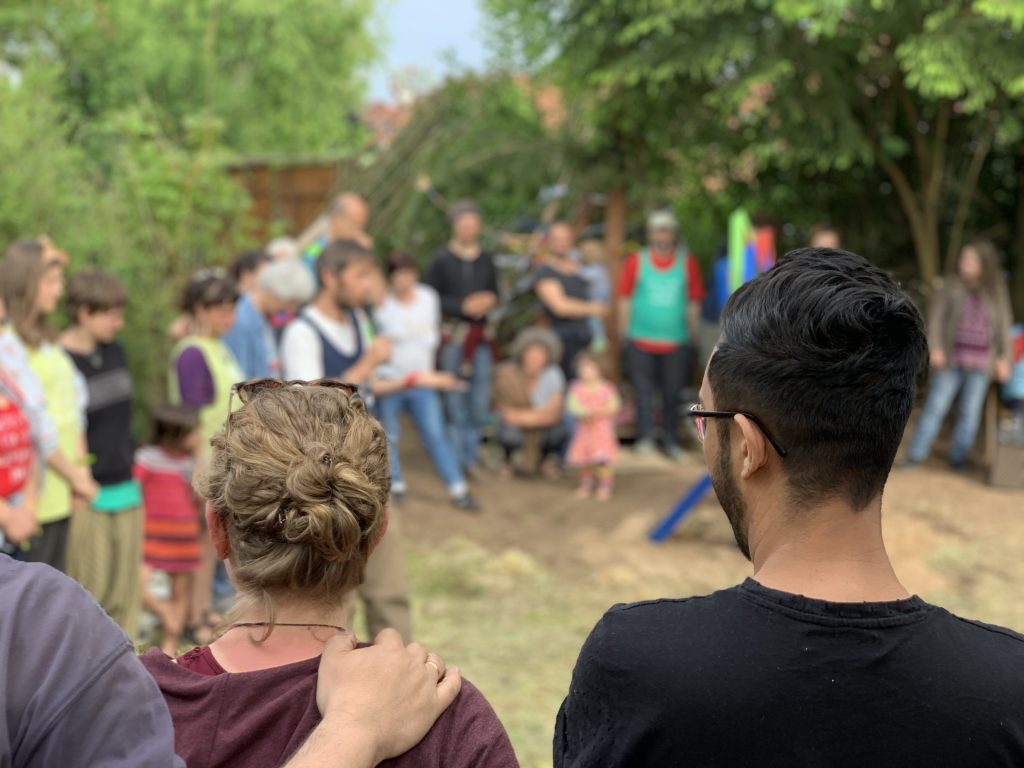How can we be together in diversity?

Learning to cooperate
The second biggest learning we passed through was the need to learn to cooperate. The fact that this disbelief was slowly replaced by belief was through a strong experience of cooperation. How can a terrain of 80 X 15 meters be mowed, cleaned up, replanted, levelled, painted, constructed and beautified in only two days?

The direction of the processes which we call development have created conditions in which we think we don’t need each other anymore. In practical terms it is over the years been increasingly more possible to live without having to meet anyone. Yet although it seems we need each other less, I believe we need each other more. We don’t need the other anymore to survive, but we need relationship to live.

What was most striking during the 2 days of collective building, was that joint power and German efficiency allowed things to be transformed with such pace that there was a lot of time and space left. But people still stayed and flocked there, because they wanted to be part of the experience, feel this energy and find any possible way to contribute. People would come to play guitar, bring food, take pictures, spontaneously join in cleaning and painting. The land was made available by a small group that had stagnated over time because they felt alone not up to the task. And with clarity of direction, design and working groups it all seemed effortless. And it’s such experiences that we need to be nourished. While the more we are able to live in parallel worlds and in the belief that we’re ok alone, the less we know how to co-operate. To operate together. Connect. Play. Work together. Share joy.

This is one of the essential experiences that the Oasis invites people to, to step into a space where we try that again. It might not always be easy, but generally a generative experience. We learn how to give and take. We learn that others are perhaps better at something and learn to let go.
Learning about diversity and inclusion
Bad Gandersheim received many refugees and migrants from different backgrounds. This is a part of co-operation that deserves special attention. We have to learn to include more perspectives. It’s one of the more challenging parts of our work on communities, but also one full of opportunities. The biggest step is to take a step back and look at our own beliefs and perspectives.
With the many previous and likely future waves of refugees and migrants settling in Europe we see on political and day-to-day level a lot of tension. There’s a strong fear-based approach. Although we’re confronted with experience that give us reason to be hesitant, we are actually limiting ourselves by the fear of the unknown and attachment to our collective pre-dominant ways.
Stepping beyond our limitations and practicing curiosity can allow surprising revelations. Many of the refugees in the village were highly educated individuals. One of the people that embraced and joined the project was Omar from Sudan. Along the days one of the nearby residents discovered that she had volunteered in the hospital he worked at years back, where he had a high rank. She was erratic and deeply touched and couldn’t belief the odds and where he was at in this new life.
It’s when we truly step into the others story that we see. But this is what we hardly do and try. There are plenty of stories of highly educated people who can’t get their credentials to be acknowledged. Of course language plays a role, but we tend to marginalize people, their contribution and views, while there’s so much to offer.
by Niels
